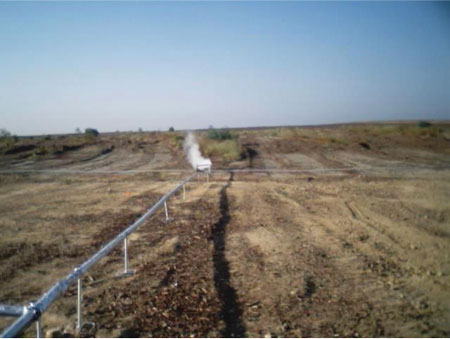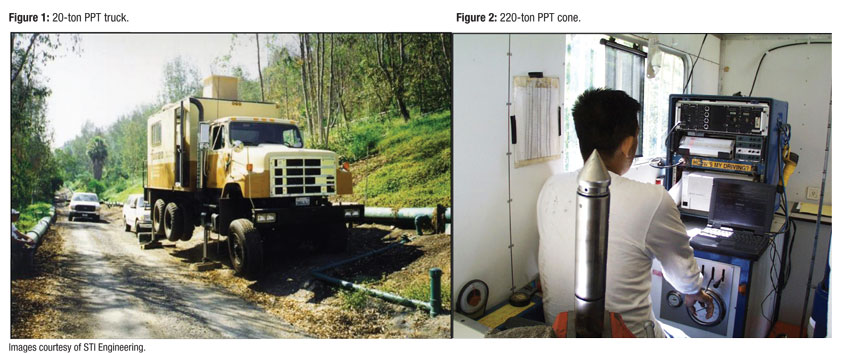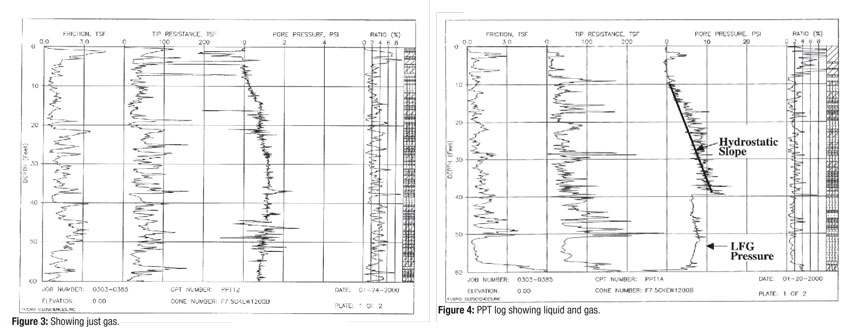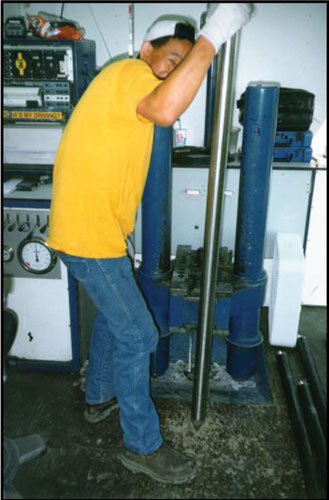Steam injection in landfills can enhance landfill gas production, recover airspace, generate clean energy and improve the landfill mining process.
By Reg Renaud

Landfill mining has been used in the past for various reasons, such as environmental concerns, material recovery and airspace recovery. Some projects have met their goals, but most have not, for various reasons. Like most projects that involve drilling or excavating below the ground surface you do not know what you will encounter until you break ground.
Landfill mining is a high-risk endeavor and to justify the risk there must be strong mitigating reasons to do the project. In dealing with landfills almost everything has risks, but the trick is to minimize them to an acceptable level. Technology has evolved in the past years to help this and to provide data that will assist in determining if the project is feasible.
The Piezo-Penetrometer Test
Prior to implementing the Steam Injection Process, it is important to investigate the current conditions inside the landfill. The best way to do this is to use the Piezo-Penetrometer Test (PPT), which has been used in the landfill industry for more than 40 years to profile the current conditions inside landfills. The PPT is mounted on a 20-ton cone truck (Figure 1).
This electronic device measures several parameters as it is hydraulically pushed into the landfill. The PPT cone measures tip resistance and sleeve resistance (useful data for soil type, strength, and density) and can indicate layers of refuse and dense soil layers within the landfill (Figure 2).

The instrument has inclinometers to determine that the cone is staying vertical during its advancement through the subsurface or landfill, which adds to the accuracy of the depth control. The depth control of the sounding is very exact via an encoder. This is very important when working in landfills with bottom liners.
The tip of the PPT contains a pore pressure transducer that can measure gas/liquid pressures as well as vacuum pressure. The data is displayed in real time onboard the truck and is stored in a computer for future analysis and 3-D Profiling.
A PPT profile investigation can provide enough data to make an informed decision to proceed with the project or not. However, there are other factors that will determine the feasibility of the project. As presented in Figure 3, the PPT log indicates gas pressure the full length of the sounding with no indication of vacuum influence. Figure 4 indicates a 30-foot column of liquid at this location. The figure also indicates a substantial layer of LFG pressure below the water column. This data (blue) is presented in the 3-D Profile in Figure 5. This could be very hazardous if an excavator were to dig into it without prior knowledge. Figure 6 shows a side view of Figure 5 from another point of view.


The 3-D Profile also presents the lack of landfill gas (LFG) collection in this area (yellow) of the landfill. Unrecovered LFG poses a danger to the environment and to the mining operation. The PPT rig can be used to install 2″ diameter steel push-in collectors at a third of the cost of drilled in wells and they are reusable. Also, there are no cuttings produced (see Figure 7).

The PPT logs can indicate how much undigested organic material is in the waste prism. It is the organic material that is usually not recycled and must be reburied in another cell taking up valuable airspace in the new cell. Sorting the organics from soil is costly. This is the profit killer in landfill mining. The PPT can make this determination but there is a technology that can convert the organic waste into LFG and is extracted to make energy.
Steam Injection
Once the PPT has investigated the landfill cell to be mined, the PPT rig will install collectors and steam injectors into the area to be mined. The steam is injected, and the vacuum from the collectors pull the steam towards the collectors. By the time the steam has reached the collectors, it has converted to LFG with 62 percent to 66 percent methane and the balance being CO2. Studies show that there is a 1:1 conversion ratio—for every cubic foot of steam injected, one cubic foot of LFG is produced. A 5-acre treatment plot can remove 450 tons of organic material per day. The gas can be used to generate 14 MW of power and the waste heat from the generators is used to make steam, therefore no cost.
Depending on the age of the landfill cell, there could be as much a 50 percent organic material in the waste prism. Removing 50 percent of the material prior to excavation can make the numbers work in favor of doing the project. The revenues from energy production will put the profits over the top. The steam process and power plant would have to be transferred to the active landfill to keep the power plant operational for the life of the new landfill.
The PPT is a very versatile instrument with many different sensors that can be added to it such as a thermistor to check for subterranean fires. If detected, the steam can extinguish it as well. It is not known if a magnetometer (for metals) has been added to the PPT yet, but it should be possible. This would help to map out the choice areas for excavation.
Protecting the Environment
The steam process has been approved in unlined landfills if potable water is used to make steam. To protect the environment, unlined landfills should be considered for mining now that the steam process can make them very profitable and safe. | WA
Reg Renaud is the president of STI Engineering (Silverado, CA) and has 42 years of experience in the waste industry. He holds patents for Steam Injection in Landfills and Steam Injection Biomass Reactors (SIBR). He can be reached at (714) 649-4422 or e-mail [email protected].
